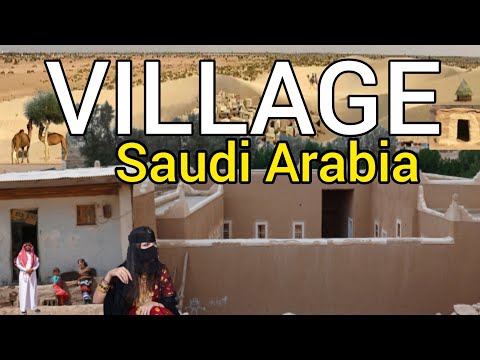
Saudi Arabia, a country primarily recognized for its vast deserts, oil wealth, and booming urban centers like Riyadh and Jeddah, has aspects that often go unnoticed by the global audience. Among these lesser-known facets is the serene and traditional lifestyle found in its villages. As of 2023, village life in Saudi Arabia offers a unique glimpse into the kingdom’s rich cultural tapestry, one that contrasts sharply with the hyper-modern urban settings most are familiar with.
#### Geographical Diversity
Saudi Arabia’s geography is more diverse than often perceived. Beyond the sprawling deserts are fertile regions and small oases where traditional village life continues much as it has for centuries. These villages are typically located in the southwestern region of Asir, along with parts of Al-Baha and Najran, where agriculture thrives due to the more temperate climate and rainfall.
#### Traditional Structures
In these secluded areas, many homes continue to be built using traditional methods and materials such as mud bricks and thatched roofs, particularly in historical regions like Al-Ula and Rijal Almaa. These materials offer not only sustainability but also natural insulation against the varied temperatures of Saudi climates. The architectural styles provide a window into the ingenious ways locals have adapted to their environment over millennia.
#### Economy
The economies in these villages primarily revolve around agriculture, animal husbandry, and handicrafts. Unlike their urban counterparts who might participate more broadly in service sectors or oil-related industries, villagers often depend on cultivating crops such as dates, figs, wheat, barley, and citrus fruits or rearing livestock like goats, sheep, and camels.
Craftsmanship such as basket weaving, pottery making, and textile weaving (particularly Sadu) remain integral to village economic life — practices passed down generationally which also attract interest from cultural tourists seeking authenticity.
#### Cultural Festivals
Another vital aspect of village life is its festivals which are deeply intertwined with Islamic traditions as well as seasonal agricultural cycles. Events such as Eid al-Fitr and Eid al-Adha involve communal prayers followed by festive gatherings. Agricultural festivals celebrate harvests with music (using traditional instruments like oud), dance (such as Ardah), poetry readings in local dialects highlighting folklore stories which provide spiritual sustenance alongside material necessities.
#### Challenges & Changes
Despite their rich culture heritage preservation poses a significant challenge; young people are increasingly migrating towards cities seeking better education or employment opportunities leading to concerns about whether these traditions will sustain another generation. Additionally internet access cellular connectivity have reached most villages combining elements modernity within confines traditional lifestyles—bringing change sometimes resistance from elder members who fear dilution centuries-old customs.
Government initiatives aimed at promoting rural tourism under Vision 2030 plan recognizing potential for cultural tourism preserving heritage while providing economic boosts local communities through improved infrastructure investments business opportunities linked hospitality industry craft sales much more focuses on making village life both sustainable attractive proposition young Saudis tourists alike.
As we move further into 2023 beyond it worth paying closer attention ways village life Saudi Arabia serves not only preserve crucial part national identity but also bridge between past future country increasingly characterized by rapid transformation development.
